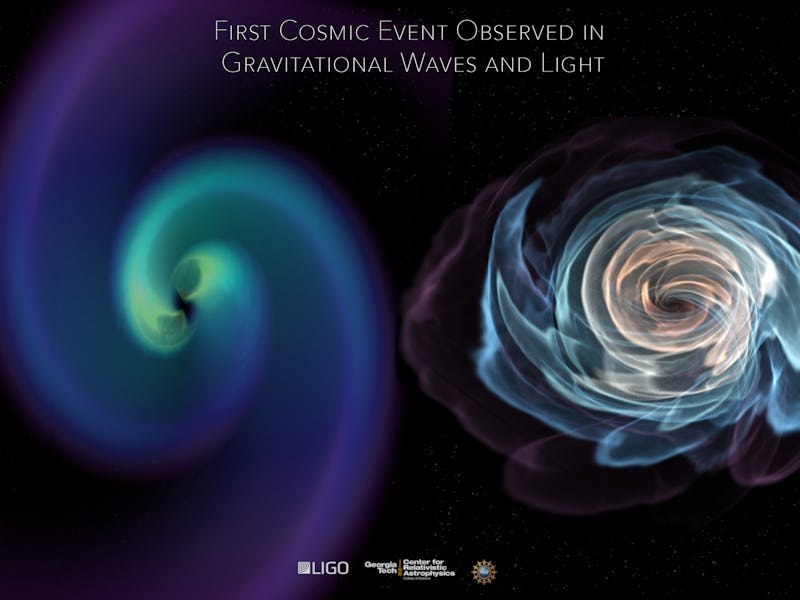Gravitational Waves Detected from the Same Cosmic Event
This is the longest gravitational wave signal ever detected.

Astronomers have seen evidence of a handful of gravitational waves in the past two years, but this week they announced that they saw something they’d never seen before.
Two neutron stars colliding is what researchers at the Laser Interferometer Gravitational-Wave Observatory — LIGO — saw this summer, news they revealed on Monday.
In an ongoing collaboration with the Virgo Observatory in Italy, the United States-based LIGO detected a prolonged signal that was different from previous black hole mergers they’d detected. This one, which occurred on August 17, was much higher frequency and lasted much longer. It turns out the signal came from two neutron stars circling each other before colliding about 130 million light-years from Earth.
The collision sent out gravitational waves in every direction, rippling spacetime. The merger also emitted a flash of gamma rays, which Earth- and space-based detectors caught. Here’s what scientists envision the collision looked like:
“While earlier detections of the black holes that we’ve made … only lasted for us a couple of seconds or much less, this neutron star inspiral lasted for over a minute,” LIGO spokesperson David Shoemaker told reporters on Monday.
The reason for this longer detection is that neutron stars, the smallest, densest stars known to exist, are much lighter than black holes. Whereas the merging black holes that created earlier gravitational wave detections were many times larger than the sun — the first detection in 2015 involved black holes of 29 and 36 solar masses — the neutron stars involved in this latest detection were only about the mass of the sun or maybe twice the mass of the sun.
As a result, this binary neutron star system emitted gravitational waves at a higher frequency, a frequency that Earth-based detectors could measure more easily.
“The result is that we can see the system for some 1,500 complete cycles of these two objects around each other,” said Shoemaker. “It gives us a chance to get a very precise measurement of the parameters of the system.”
Here’s how the latest detection compares to previous ones:
This prolonged signal came to Earth from the region defined by the Hydra Constellation. Scientists figured out where the gravitational waves came from by comparing the times when the signals hit the three different detectors involved: the Virgo Observatory detector in Italy, the LIGO detector in Louisiana, and the LIGO detector in Washington. Here’s what it looked like:
By comparing when the gravitation waves hit the three detectors, astronomers could figure out where the neutron stars were located in space.
The miniscule differences in detection times helped astronomers discern where the waves emitted from originally. The next steps will be to figure out what exactly happened to the neutron stars after they collided.
“We don’t exactly know what happened to the objects at the end,” said Shoemaker. “We don’t know whether it’s a black hole or a neutron star, or perhaps something else.”